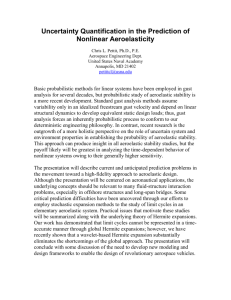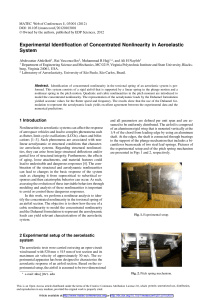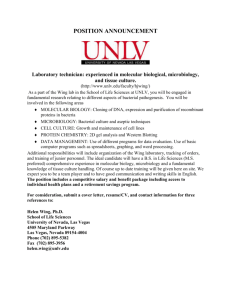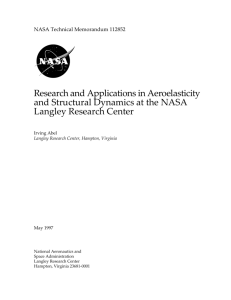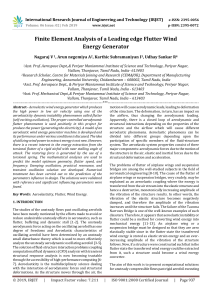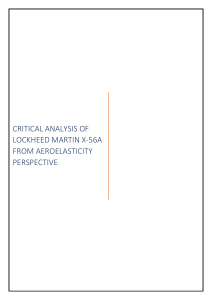Research Axis: Nonlinear Effects in Fluid
advertisement
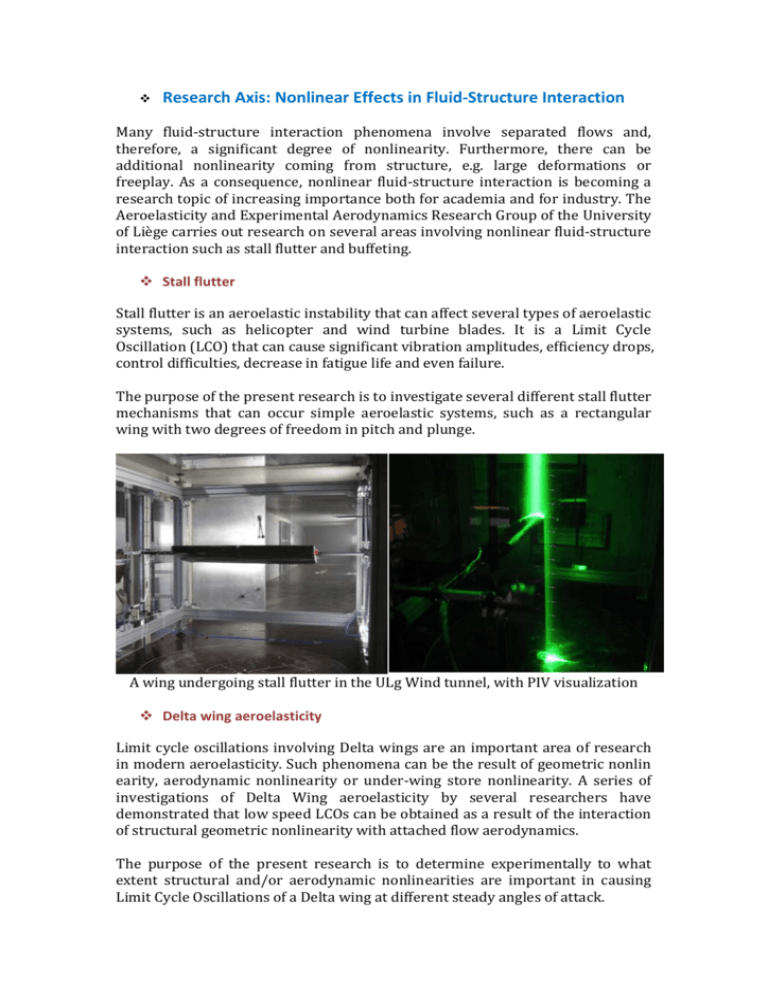
Research Axis: Nonlinear Effects in Fluid-Structure Interaction Many fluid-structure interaction phenomena involve separated flows and, therefore, a significant degree of nonlinearity. Furthermore, there can be additional nonlinearity coming from structure, e.g. large deformations or freeplay. As a consequence, nonlinear fluid-structure interaction is becoming a research topic of increasing importance both for academia and for industry. The Aeroelasticity and Experimental Aerodynamics Research Group of the University of Liège carries out research on several areas involving nonlinear fluid-structure interaction such as stall flutter and buffeting. Stall flutter Stall flutter is an aeroelastic instability that can affect several types of aeroelastic systems, such as helicopter and wind turbine blades. It is a Limit Cycle Oscillation (LCO) that can cause significant vibration amplitudes, efficiency drops, control difficulties, decrease in fatigue life and even failure. The purpose of the present research is to investigate several different stall flutter mechanisms that can occur simple aeroelastic systems, such as a rectangular wing with two degrees of freedom in pitch and plunge. A wing undergoing stall flutter in the ULg Wind tunnel, with PIV visualization Delta wing aeroelasticity Limit cycle oscillations involving Delta wings are an important area of research in modern aeroelasticity. Such phenomena can be the result of geometric nonlin earity, aerodynamic nonlinearity or under-wing store nonlinearity. A series of investigations of Delta Wing aeroelasticity by several researchers have demonstrated that low speed LCOs can be obtained as a result of the interaction of structural geometric nonlinearity with attached flow aerodynamics. The purpose of the present research is to determine experimentally to what extent structural and/or aerodynamic nonlinearities are important in causing Limit Cycle Oscillations of a Delta wing at different steady angles of attack. Delta wing undergoing Limit Cycle Oscillations in the ULg Wind Tunnel Future research Further experiments are planned in the ULg Wind Tunnel in order to improve the understanding of the aeroelastic behavior of bluff bodies, such as rectangular and circular cylinders. Such research will also have application in civil engineering.
